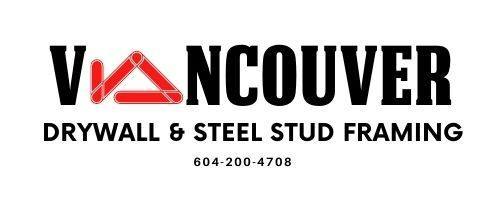Vancouver Drywall: A Comprehensive Handbook for Homeowners
Drywall, or plasterboard or wallboard, is a fundamental building material used to construct interior walls and ceilings. This is composed of gypsum plaster sandwiched between two layers of paper, which gives it its durability and fire-resistant properties.
In this short guide, we will provide valuable insights into the composition, types, installation techniques, repair, maintenance, tools, and safety measures of drywall companies
Vancouver.
Types of Drywall
Drywall is an important part of modern construction for making walls and ceilings inside buildings. There are three main kinds of drywall, each with its special uses:
Standard Drywall
This is the most common type used and is good for many different areas in homes and offices. It's made of gypsum plaster between two layers of paper. People like to use this type because it's easy to work with and can be used in bedrooms, living rooms, and offices.
Moisture-Resistant Drywall (Green Board Drywall)
This kind of drywall is made to handle moisture and humidity. It's great for bathrooms, kitchens, and laundry rooms with much moisture. You can tell it's moisture-resistant because it has green-coloured paper on the outside. This extra protection helps stop mould and mildew from growing and keeps the walls and ceilings in those damp areas lasting longer.
Fire-Resistant Drywall (Type X Drywall)
Fire-resistant drywall, also called Type X drywall, has special things added to prevent fire from spreading quickly. It's very important for making buildings safer in case of a fire, especially in places like garages or near kitchen stoves. When this drywall gets hot, it lets out water vapour that slows down the flames. This gives people more time to leave the building safely and keeps fires from spreading quickly inside.
Drywall Installation Techniques
Drywall installation is a careful and detailed process. Here are the main steps to follow:
5. Sanding and Finishing
After the joint compound dries, carefully sand the surface. This will make it even and smooth out any rough areas. Once the sanding is done, the drywall is ready for painting or other finishing touches.
Optimal drywall installation is achieved by entrusting the task to dependable drywall contractors. These professionals have a deep understanding of the intricacies involved and are equipped with the finest tools necessary to accomplish the job with excellence.
Drywall Repair and Maintenance
Over time, drywall can develop cracks, holes, or other damage. Joint compound and drywall patch kits are effective solutions for small holes and cracks. This process helps conceal the damage and restore the surface to its smoothness.
In cases of more extensive damage, cutting out the affected area and replacing it with a new section of drywall can be necessary. This ensures that the damaged portion is completely removed and the repaired section seamlessly integrates with the surrounding drywall.
Regular inspections are essential to keep drywall in good condition. Frequently inspecting for damage indicators, such as water stains or cracks, can lead to early discovery and prompt repairs, stopping the issue from getting worse and possibly saving money on future, more involved repairs.
To ensure optimal upkeep and
maintenance for
your drywall, it is advisable to entrust the task to dependable drywall contractors. These professionals possess a deep understanding of the intricacies involved and are equipped with the finest materials required to accomplish the job with excellence.
Tools and Materials
In this section, we’ll show some essential tools and materials used by drywall contractors in Vancouver for working with drywall:
- Drywall sheets
- Utility knife or drywall saw
- Measuring tape
- Screw gun or hammer
- Drywall screws or nails
- Joint tape
- Joint compound (mud)
- Sandpaper or sanding sponge
- T-square or chalk line
Safety Measures and Precautions
When working with drywall, it is important to prioritize safety. Wear personal protective equipment (PPE) such as safety glasses, a dust mask, and gloves to protect yourself from dust and potential injuries. Make sure the work area has proper ventilation to disperse dust and fumes.
Drywall sheets can be heavy and awkward to handle. Use proper lifting techniques to prevent strain or injuries, such as bending at the knees and lifting with your legs. If the drywall is too heavy to lift safely on your own, seek assistance from a colleague or use lifting equipment. Furthermore, exercise caution around electrical outlets and wiring when cutting or installing drywall.
Reliable Drywall Contractor Vancouver
Drywall is a versatile and durable building material that is used in a wide variety of applications. If you are considering a drywall project, choose Vancouver Drywall & Steel Stud Framing, your reputable Vancouver drywall company that can provide you with high-quality service at a competitive price.
If you are in Vancouver and need drywall services, please contact Vancouver Drywall & Steel Stud Framing today. We would be happy to provide you with a free quote and discuss your project in more detail.
FAQs
-
Can I Hang Heavy Items Like Shelves or Cabinets Directly on Drywall?
It's best to locate and attach heavier items to the wall studs behind the drywall using appropriate anchors or screws.
-
How Do I Repair a Hole in the Drywall?
Small holes can be patched with joint compound and a patch kit, while larger holes require cutting out the damaged area and replacing it with new drywall.

Address
4214 Miller St. Vancouver, BC, V5N 3Z8 Canada
Phone
604-200-4708
vansteelstuds@gmail.com
CONTACT US TODAY!
Contact Us
We will get back to you as soon as possible
Please try again later
